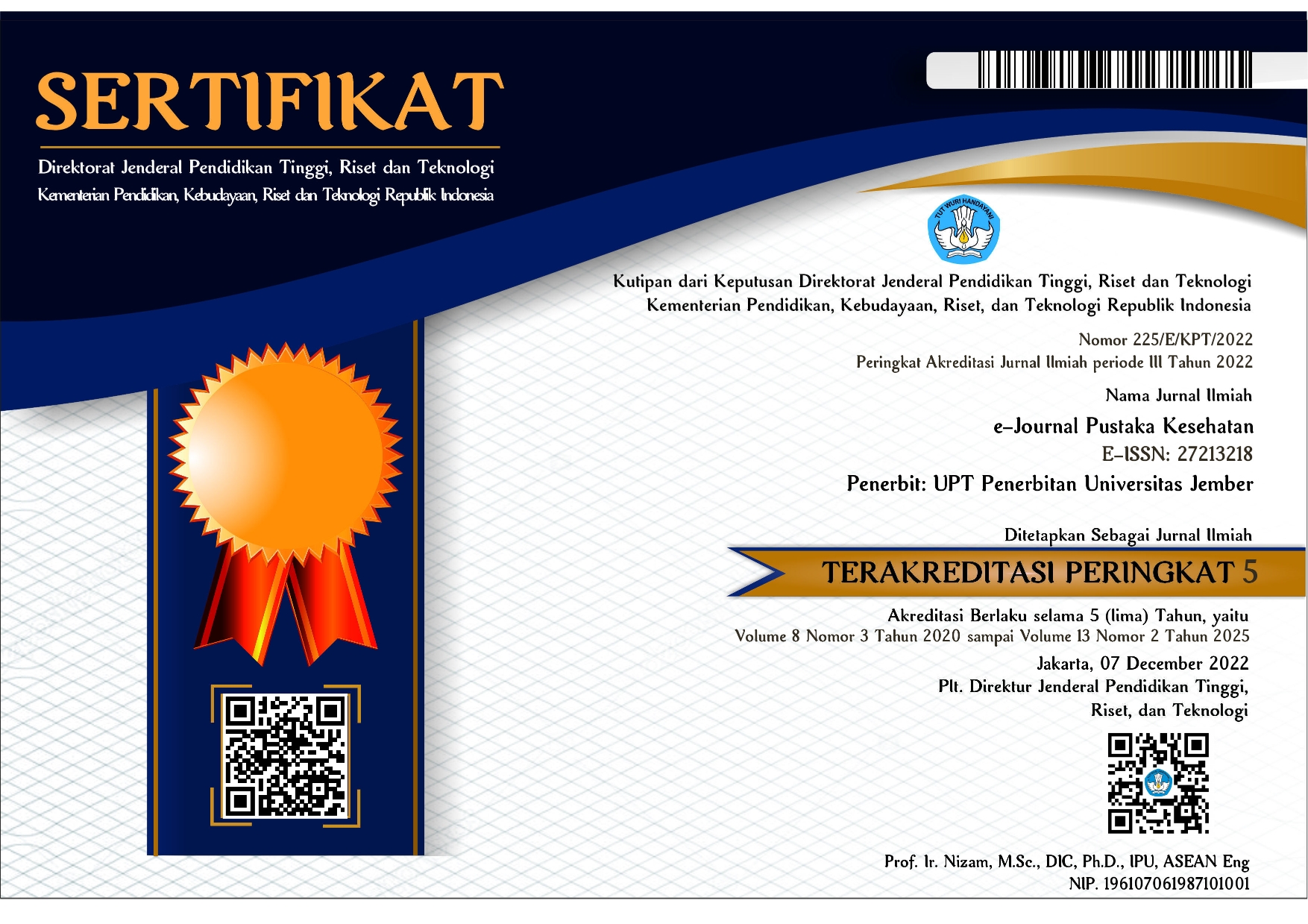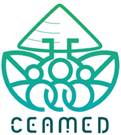Hubungan Parental Monitoring dengan Perilaku Seksual Berisiko pada Remaja di Desa Puger Kulon Kecamatan Puger Kabupaten Jember (Correlation of Parental Monitoring with Risky Sexual Behavior in Adolescents in the Puger Kulon Village Districts Puger of Jember Regency)
Abstract
Adolescence is a part of group or individual that is were on transition from children to adult and is vulnerable for any problem on themselves and environment problems. The purpose of this study is to analyze the correlation of parental monitoring with risky sexual behavior on adolescents in the Puger Kulon Village District Puger of Jember Regency. The type of this research is descriptive analytic using cross sectional approach. Sample of this research is 87 adolescents taken using multistage random sampling technique. Data of parental monitoring and risky sexual behavior is collected using questionnaire instrument already done to validity test and reliability test. The reliability value test of parental monitoringquestionnaire are 0,834 and risky sexual behavior questionnaire are 0,930. Data analyzed using Spearman rank test with confidence level 95%. The result of this research shows that most of parental monitoring is 57 (65%) less precise, while 22 (25,3%) parental monitoring is unappropiate. Independent variable result shows 61 adolescents (70,1%) have moderate sexual behavior risk and 1 adolescent (1,1%) have high risk of sexual behavior. Analysis result shows there’s no significant correlation between parental monitoring with risky sexual behavior on adolescents with p value 0,158 (p>0,05). Its caused by parental monitoring as one of factor that can changed when the environment adolescent doesn’t support and which is very influence the adolesence behavior against their peers. This research recomended to indicate the important of having deep assasment of another factors that is influence risky sexual behavior on adolescent.
Keywords : Parental Monitoring, Risky Sexual Behavior, Adolescents
e-Journal Pustaka Kesehatan has CC-BY-SA or an equivalent license as the optimal license for the publication, distribution, use, and reuse of scholarly work. Authors who publish with this journal retain copyright and grant the journal right of first publication with the work simultaneously licensed under a Creative Commons Attribution-ShareAlike 4.0 International License that allows others to share the work with an acknowledgment of the work's authorship and initial publication in this journal.











